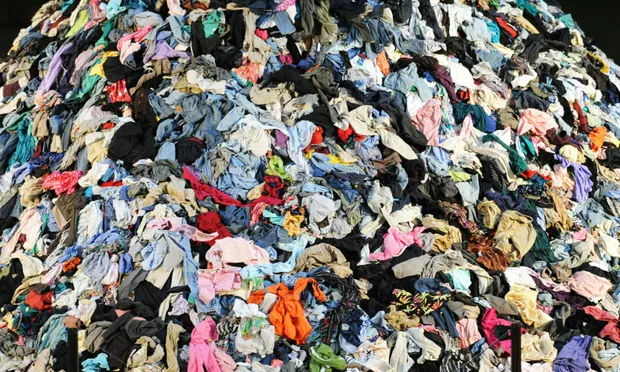The price paid: fast fashion and the damage done
‘No Man’s Land’ by Christian Boltlanski
It’s no secret that anti-sustainability, overconsumption, and the treatment of workers are some of the larger issues in the fashion industry. In fact, the production side of the industry makes up 10% of humans’ carbon emissions according to the Geneva Environment Network. The 10,000 liters of water it takes to run these factories contain dangerous chemicals that create wastewater, which is a huge risk to the general public’s and animals’ health if it enters major waterways, as stated by Princeton Student Climate Initiative Factories located in India and Turkey force workers to work close to full day shifts, getting paid less than minimum wage, in conditions that put their health at risk, all to crank out mass productions of clothing. Larger designer brands like Eileen Fisher have made a point to stress the importance of this issue; “Becoming more mindful about clothing means looking at every fiber, at every seed, and every dye and seeing how to make it better,” Eileen Fisher herself said.
The media shows ads about the latest trends from various retailers which teenagers are often the target of since the clothing made in these factories is made cheaply, so purchasing from these websites and stores won’t break the bank. There’s also the notion that people don’t typically care where or how this product was manufactured, or how ethical it is, as long as it can be delivered in 2-5 business days.
However, this has its consequences. Although thrifting an entire closet is a lot more of a conscious choice than ordering a huge order from Shein, this leads us to the issue of overconsumption and the potential gentrification of clothing that Depop sellers profit from. Plus, why pay a higher price for the proper treatment of workers and eco-friendly materials and practices?
The crossroads cannot be solved with Instagram activism or just a single conversation, so what’s the move? One word: research. People are always on their phones anyway, so giving up a few minutes of the day to fact-check brands and find more environmentally-friendly ones isn’t a difficult thing to do. Preaching for solutions to stop the rise in damage to our planet and the rights of garment workers includes coming up with personal plans on how to rethink carbon footprints and where money is being spent; this is the first step to making the first impressions of change.
It’s important to acknowledge that purchasing a basic Zara top once in a while won’t tip the scales of how environmentally sound the earth is. That said, making it a habit of being a once-in-a-while thing will help the goal of becoming more environmentally and ethically conscious, as billion-dollar corporations that contribute to these issues will make less of a profit. The need for sustainability is receiving attention from United Nations as well, as officer Simone Cipriani comments, “We don’t want sustainability to be our edge, we want it to be universal. “When an industry doesn’t care about how people are treated, no consideration of sustainability is possible. You can’t just care about the environment and forget about the fair and ethical treatment of people,” Cipriani said.
It may seem small at first, but if the world slowly adapted to this informed mindset, a cleaner, and more conscious future would be inevitable.

Bella Kaminsky is a Senior, who is looking forward to graduating in the hopes of pursuing a career in journalism. In her free time, she enjoys writing...







